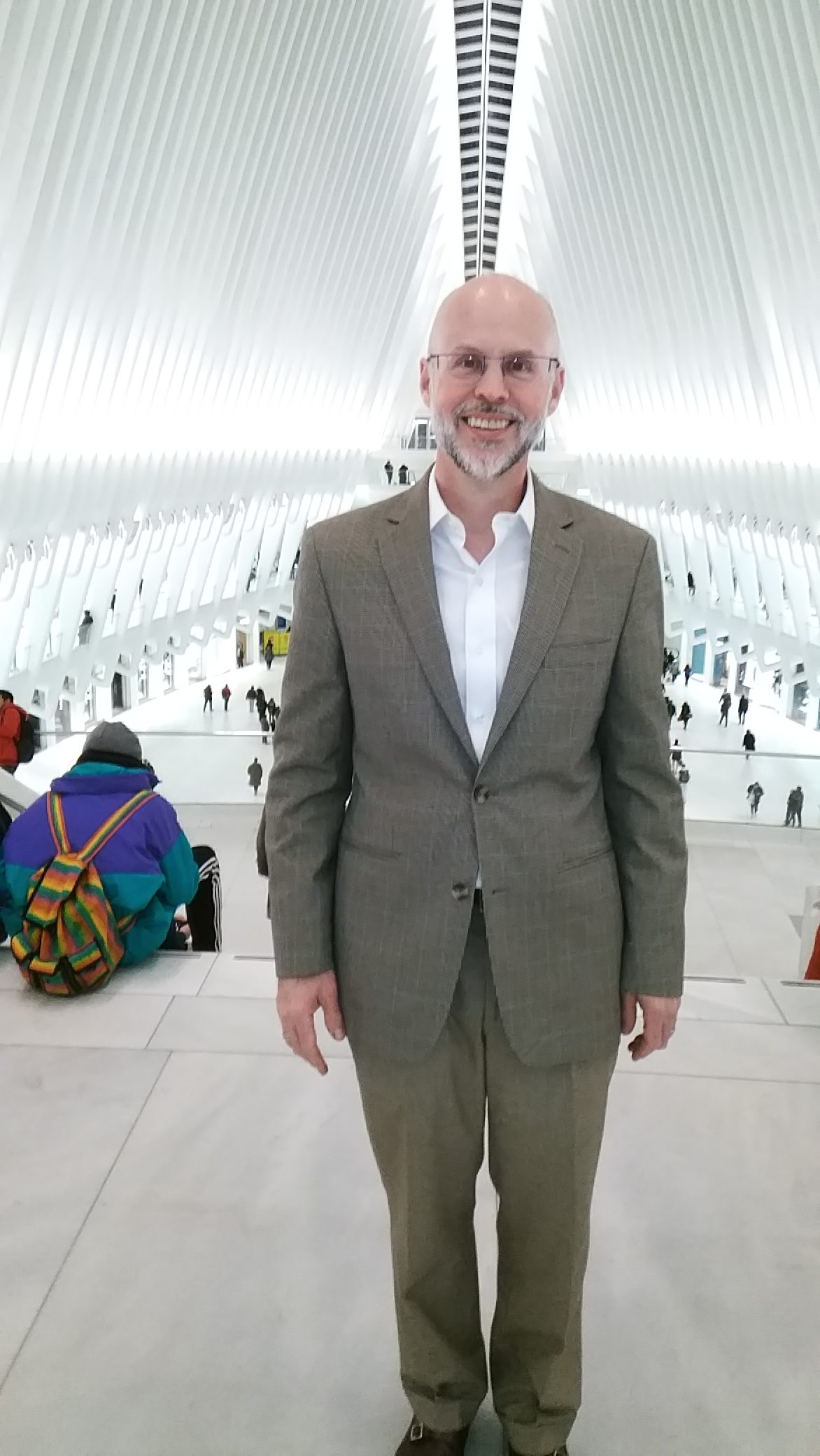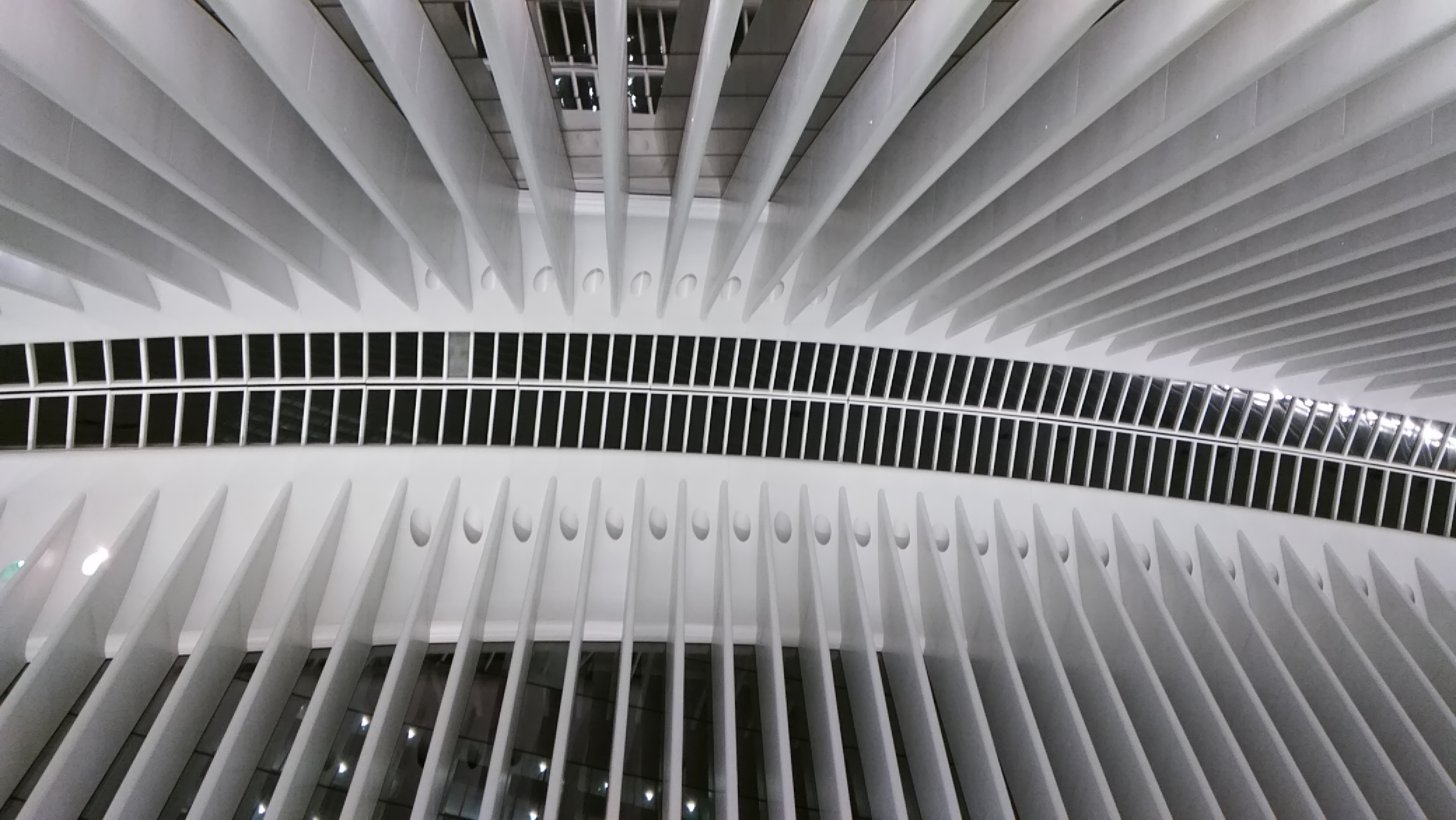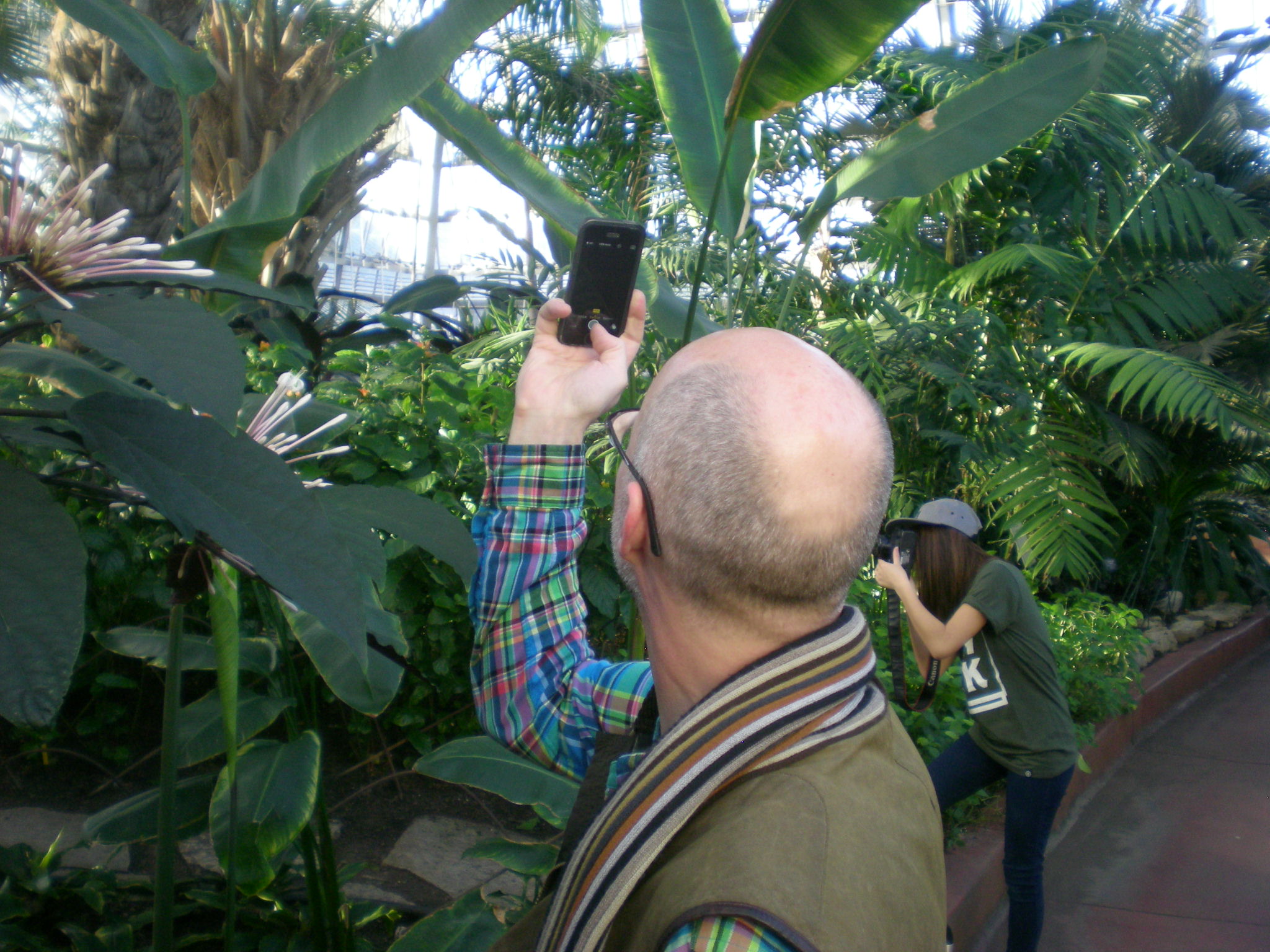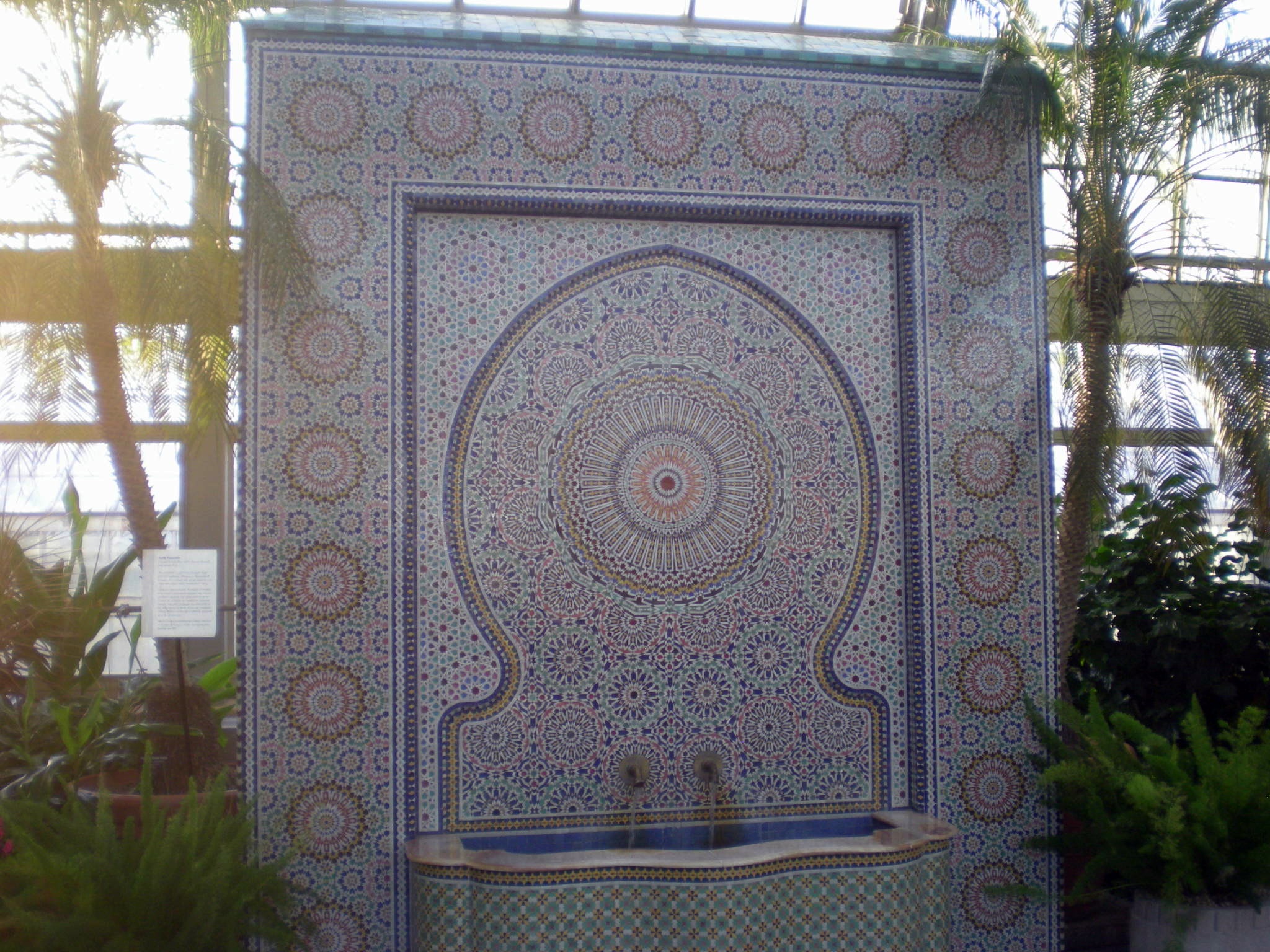Until a few weeks ago, I assumed that I’d take no more trips for the rest of the year. I’ve had an exceptional year in that way, so another one would be an unexpected cherry on top of the sundae.
Early this month, my company invited me to some meetings and other events at headquarters in downtown Manhattan, so on Wednesday I flew from O’Hare to LaGuardia, returning today. The first thing I noticed in NY is that the redevelopment of LaGuardia is coming along. LGA is on its way to being a real 21st-century airport, rather than the dingy embarrassment it has long been.
On the whole, the weather was cooperative for a visit, clear and cool until Saturday, when it was cool and alternated between drizzle and mist. The pandemic was not cooperative. Some of the events scheduled for my visit were canceled or otherwise disrupted. New Yorkers were eager to be tested at popup facilities.
I had some time to walk the streets and other pathways of the city, especially on Saturday – a low-risk activity, even in the days before the vaccines – and had a few good dine-in meals, in spite of everything. Such as at a storefront on Water Street, Caravan Uyghur Cuisine, where I had a wonderful lamb dish, besides the experience of visiting a Uyghur restaurant for the first time.
From Wednesday evening to Friday morning, I stayed at a hotel at the non-financial end of Wall Street, and spent the whole time in Lower Manhattan, below Barclay St. From Friday evening to this morning, I stayed at a hotel in Midtown East (or Turtle Bay, on 51st) and spent some time around there, though my travels took me back downtown sometimes.
Lower Manhattan is a fairly small district, with its streets roughly hewing to those of New Amsterdam, meaning a grid that’s been dropped and stepped on, unlike most of the rest of the island. That makes for more interesting exploring, but it’s also possible to get disoriented, though never for very long.
During this visit, I had time to look over two streets in detail, Wall and William, though I poked around some others, such as the charming and close-in Stone Street, where a residue of 19th-century buildings overlook 21st-century outdoor bubbles that serve as restaurant annexes.
Spent some time in Battery Park (officially The Battery, but does anyone call it that?), which was alive with tourists and a few buskers late on Friday afternoon. Including this fellow, who was playing Christmas songs on his erhu. He was good, but not drawing much of a crowd, so I gave him a dollar.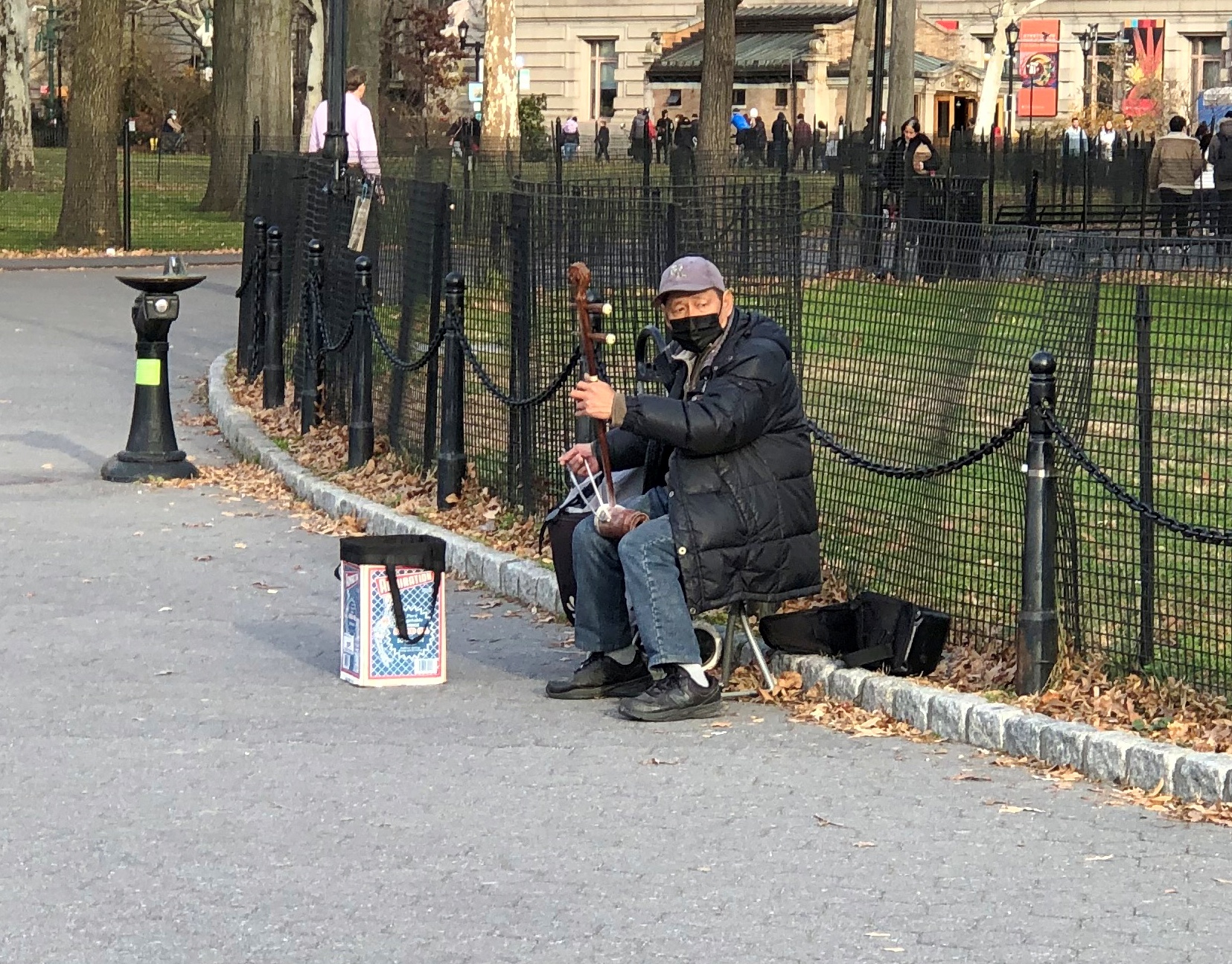
I did a lot of walking, but also rode the subway. It was about the same as ever, except for near-universal masks.
Also, no matter how many times I visit New York, and I’ve lost count, and how many times I ride the subway, I still get on the wrong line, get off at the wrong station, and mistake an express for a local. I did all of those things this time, once each. My wayfaring skills are pretty good, but without more practice, are no match for the irregularities of the system, which was welded together more than a century ago from two different competing systems, the IRT and the BRT, which were themselves consolidations of disparate lines.
On Saturday, my only nonworking day in town, I was up early and walked with my old friend Geof Huth from Battery Park, near where he lives, up the greenway along the Hudson River to the city’s newest park, Little Island, a course of nearly three miles. Here’s Geof on Little Island.
We had a grand walk that morning, passing small parks, gardens, memorials, sculptures, recreational facilities, many Hudson River piers, and urban oddities, such as one of the most brutal structures I’ve ever seen, the Spring Street Salt Shed.
One thing I did not do, which I had fully planned to do on Saturday afternoon, was head up to the other tip of Manhattan to see the Cloisters. By now it’s a running joke with myself. Every time I go to New York, I want to see it. I have since a New Yorker friend of mine first recommended it to me in 1983, and a lot of other people have since then. Somehow or other on each trip, something happens to prevent my visit.
This time I was too tired after the grand walk, though I don’t regret the miles along the Hudson. Not only did we see a lot on the land side of the path, we had some excellent views of Jersey City and eventually Hoboken, across the river. Is it odd that I want to go to those places as well someday? Maybe not as odd as it once would have been.
Had some fine views of Lower Manhattan too, such as with One WTC poking into the clouds. I’m going to consider this a vista, since we were raised a bit above sea level.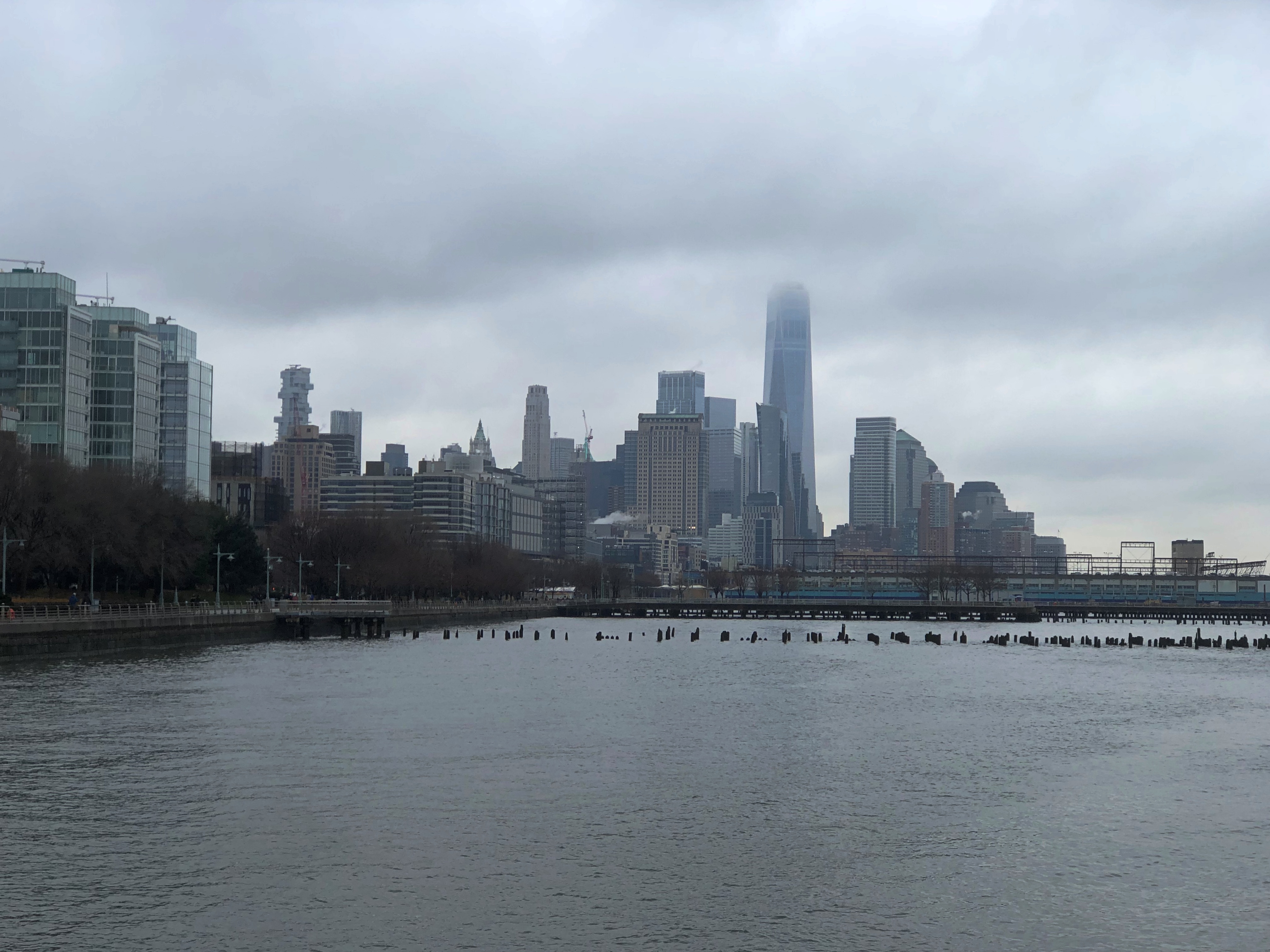
Though not technically a vista, I did manage to see the length of Manhattan as we left today.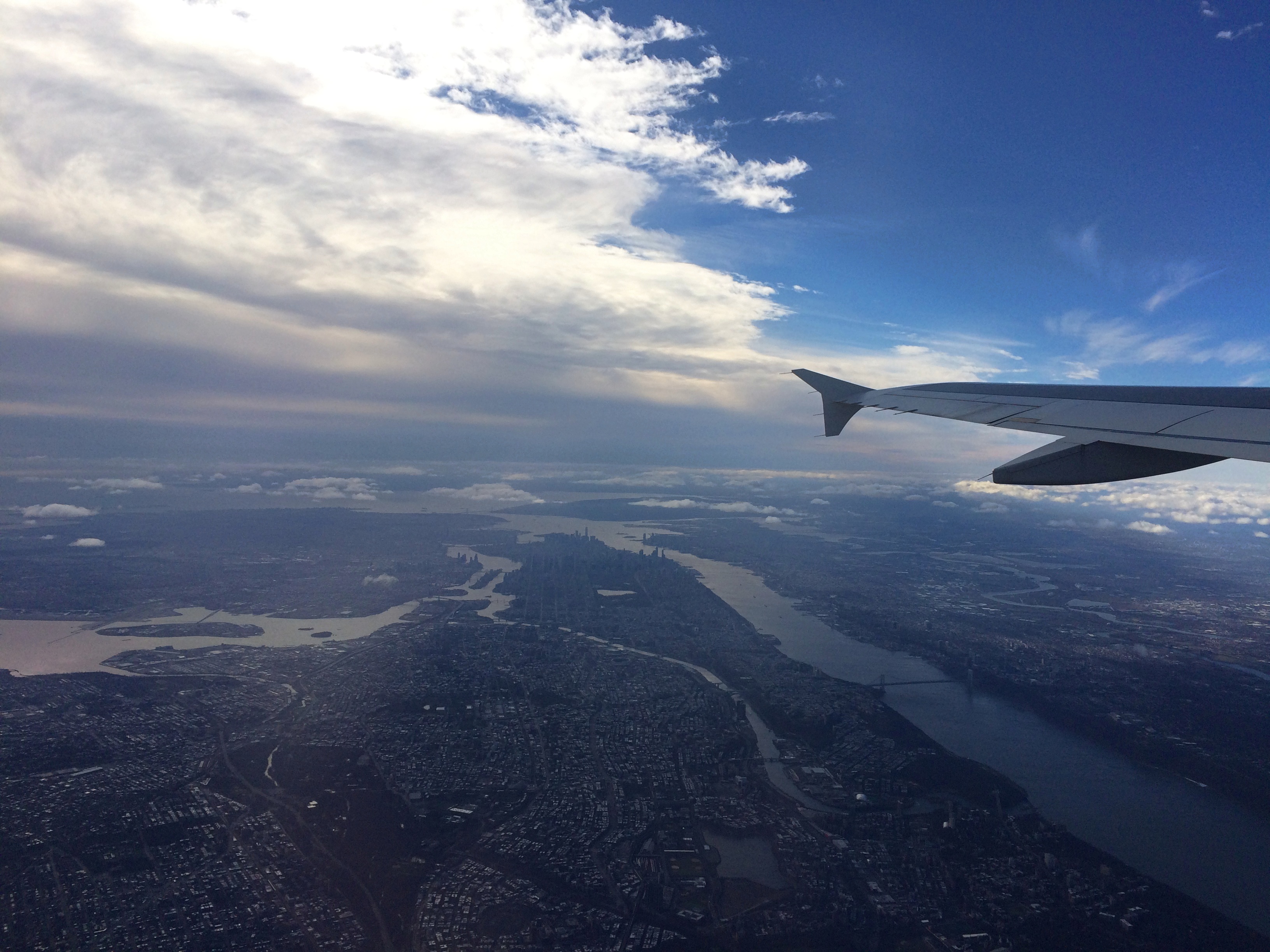
And a good deal else, such as the infamous Rikers Island.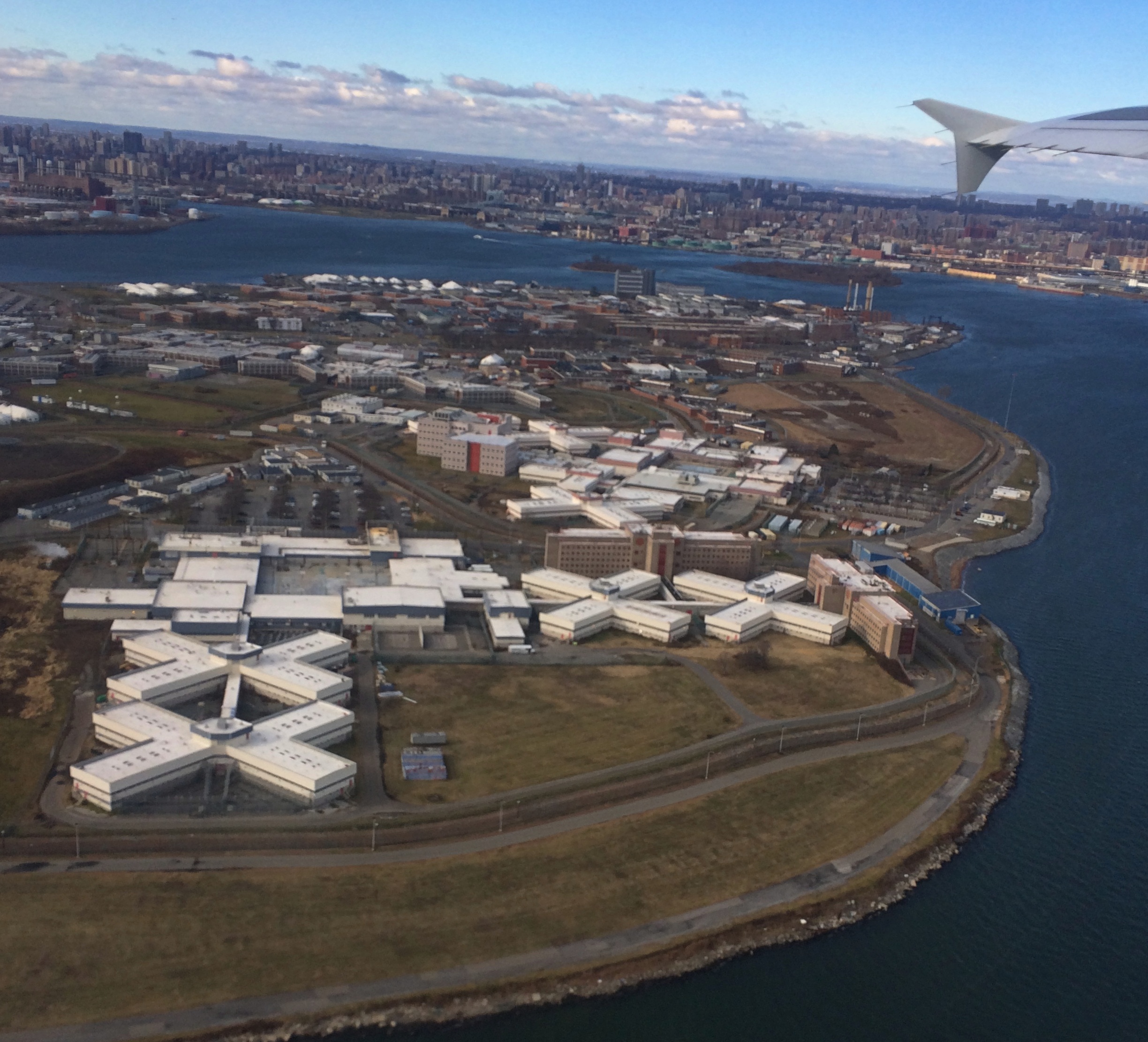
I thought the year of vistas had come to a conclusion after Russian Hill, but no. I squeezed a few more more in.
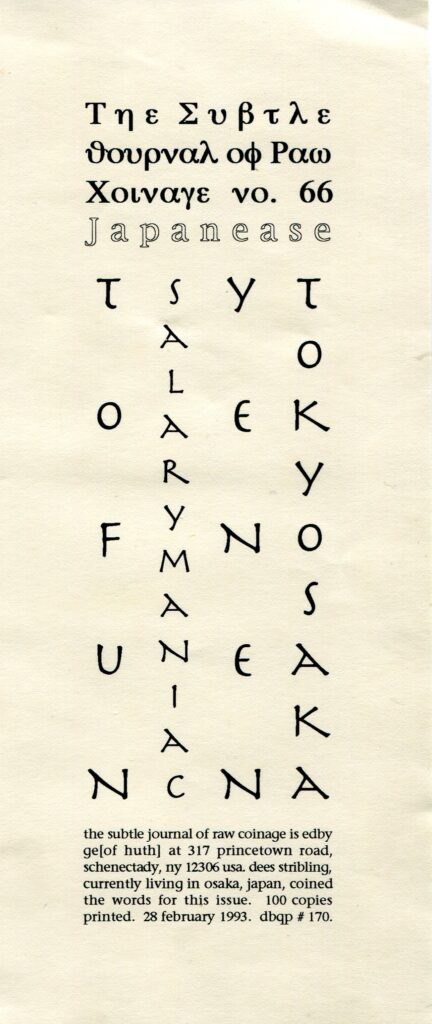
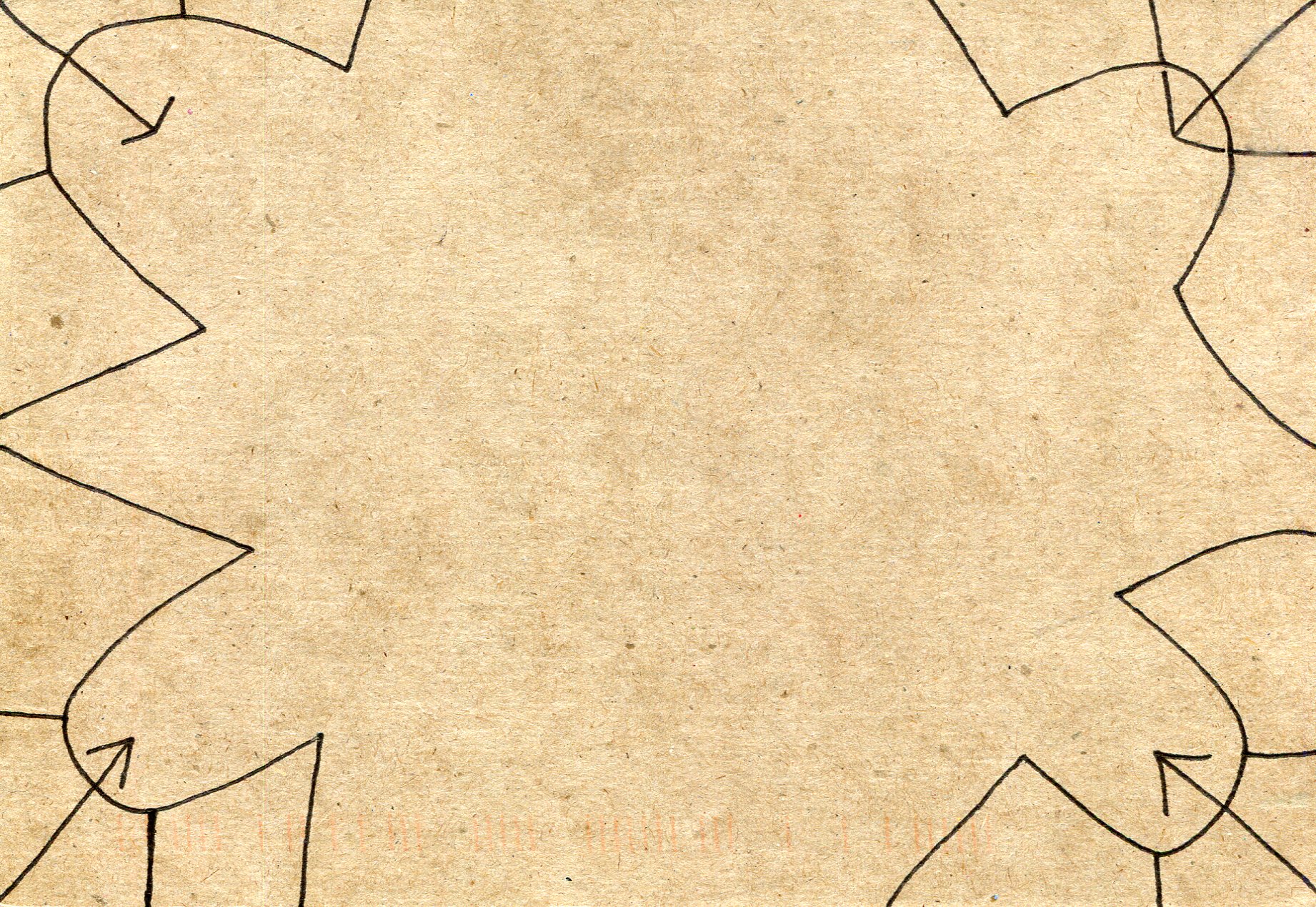
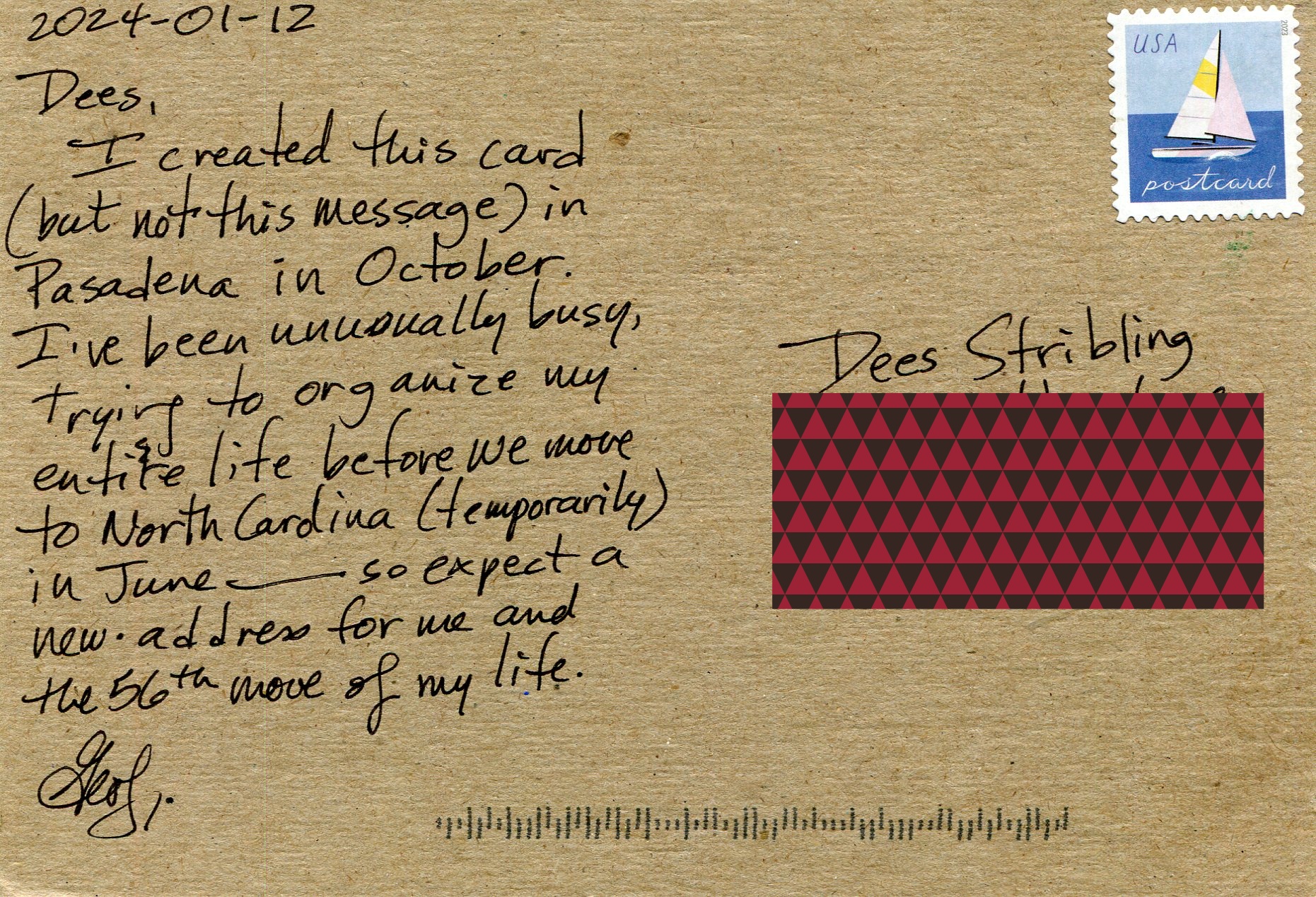
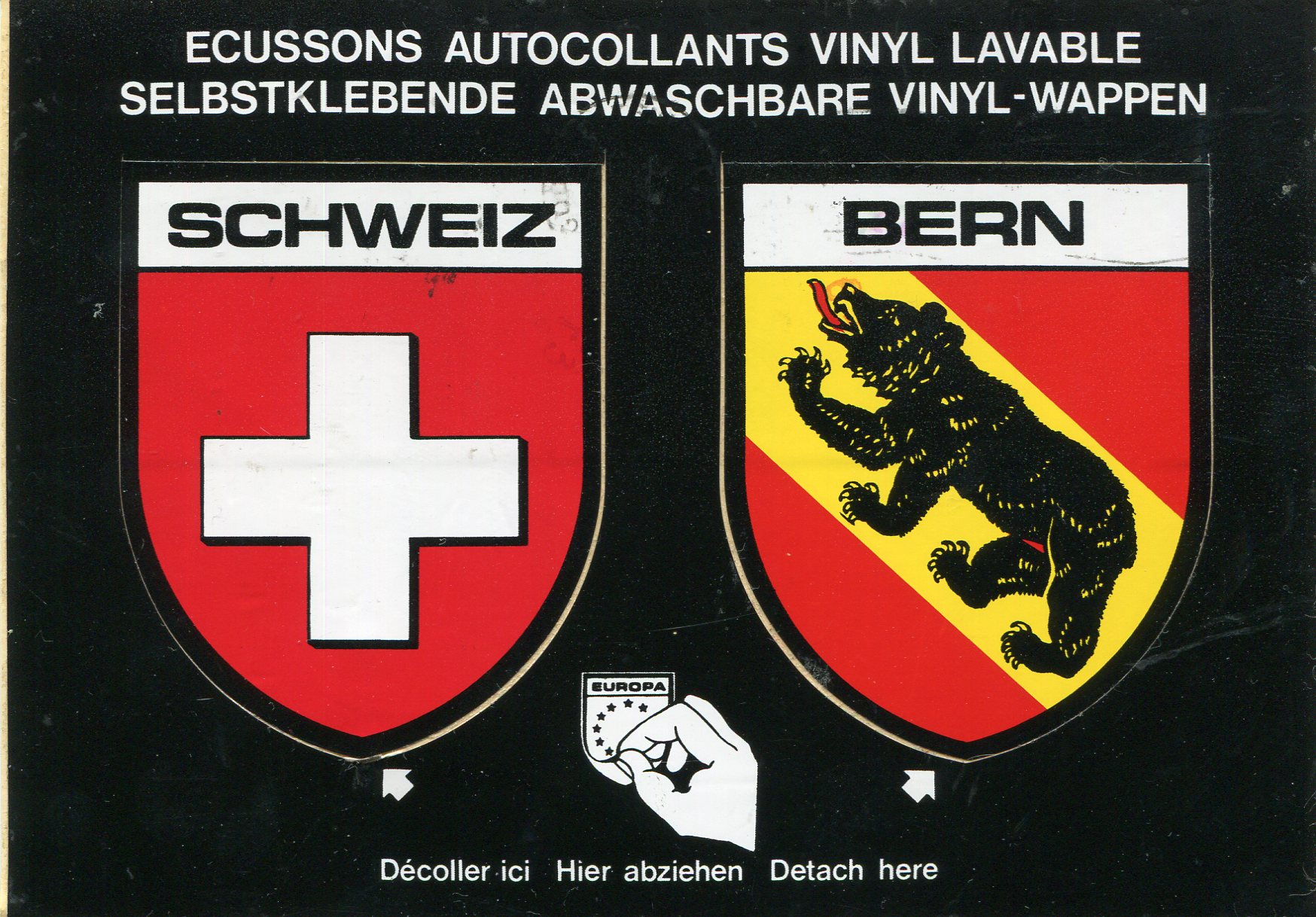

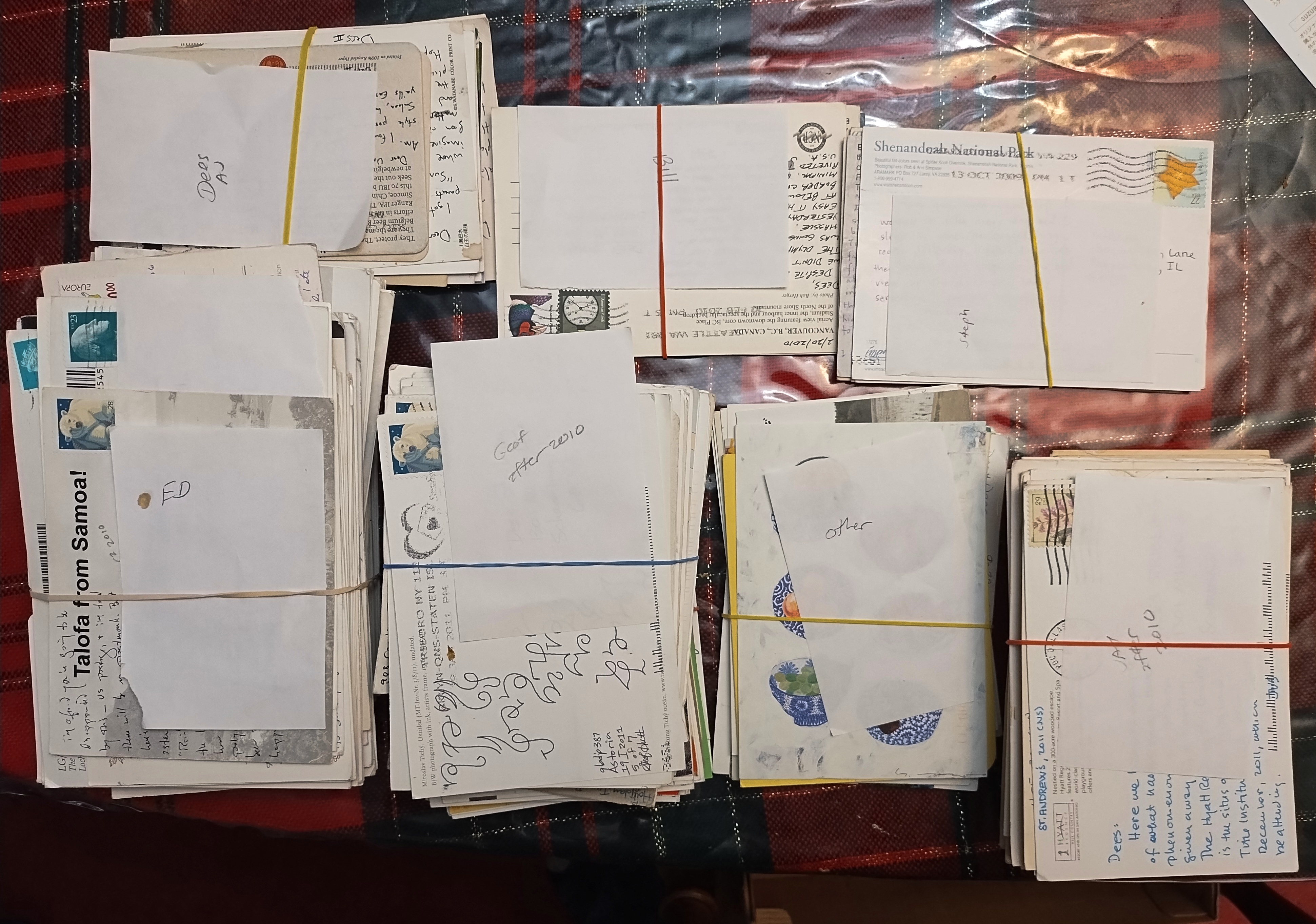
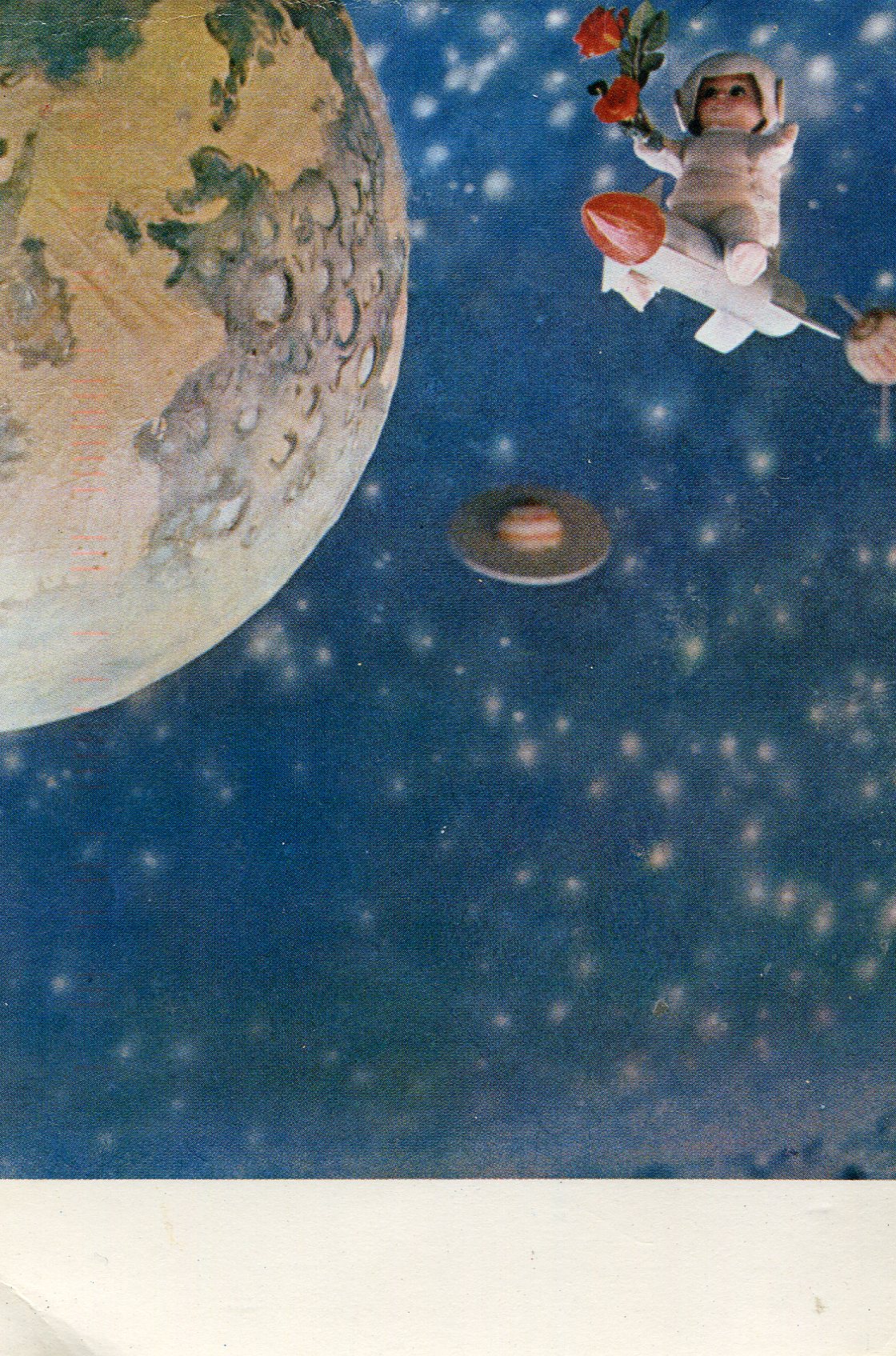

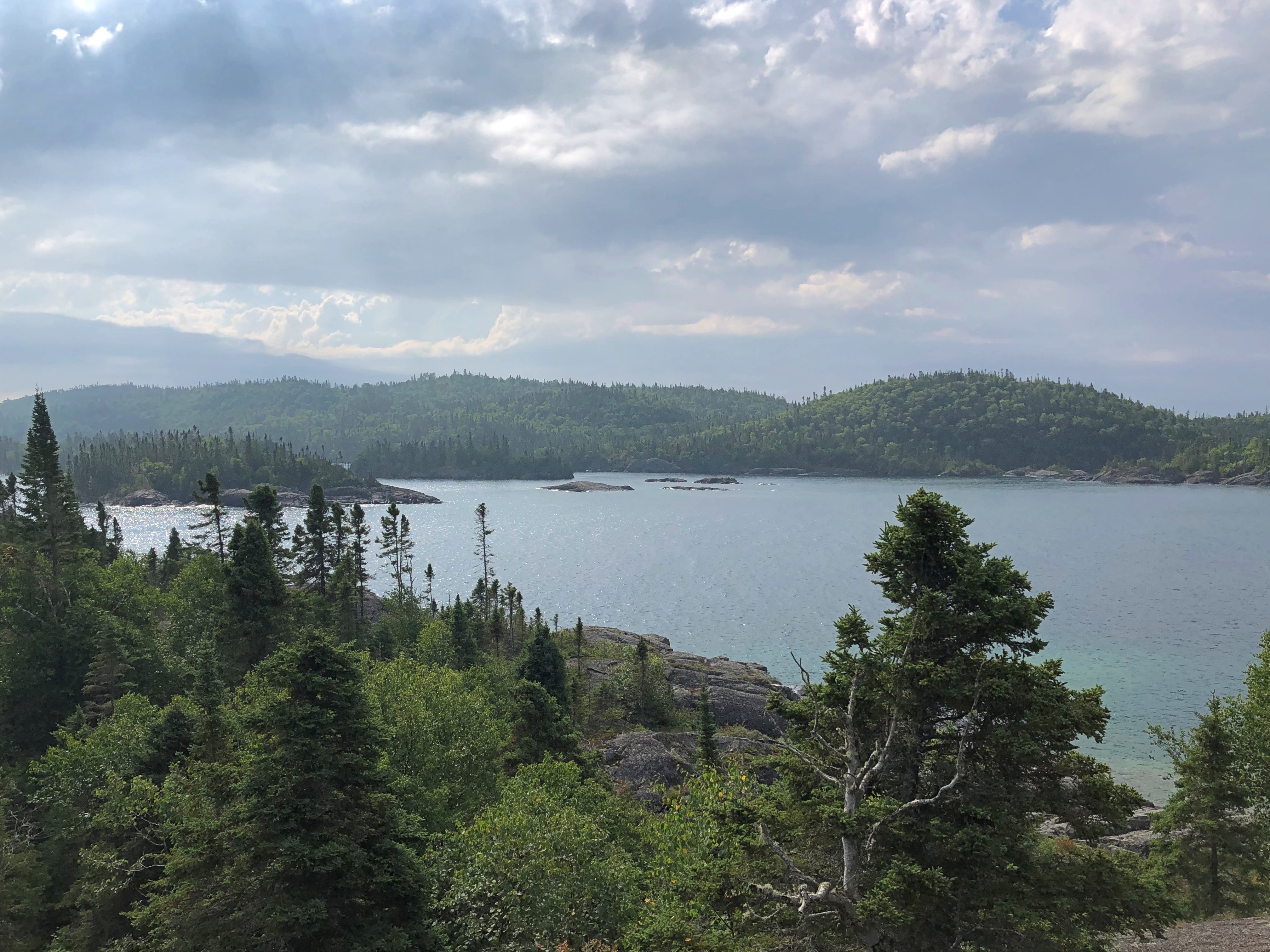

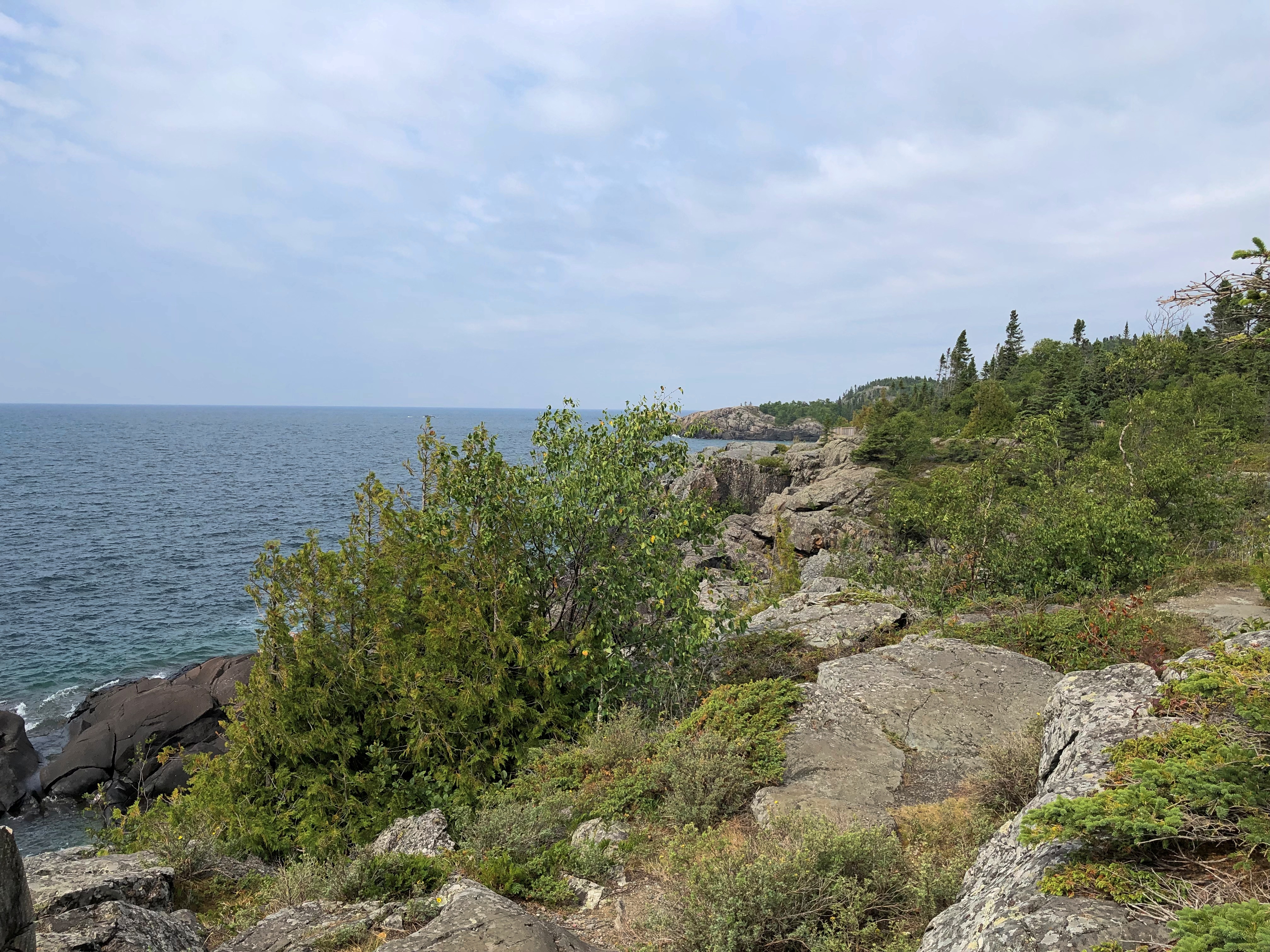
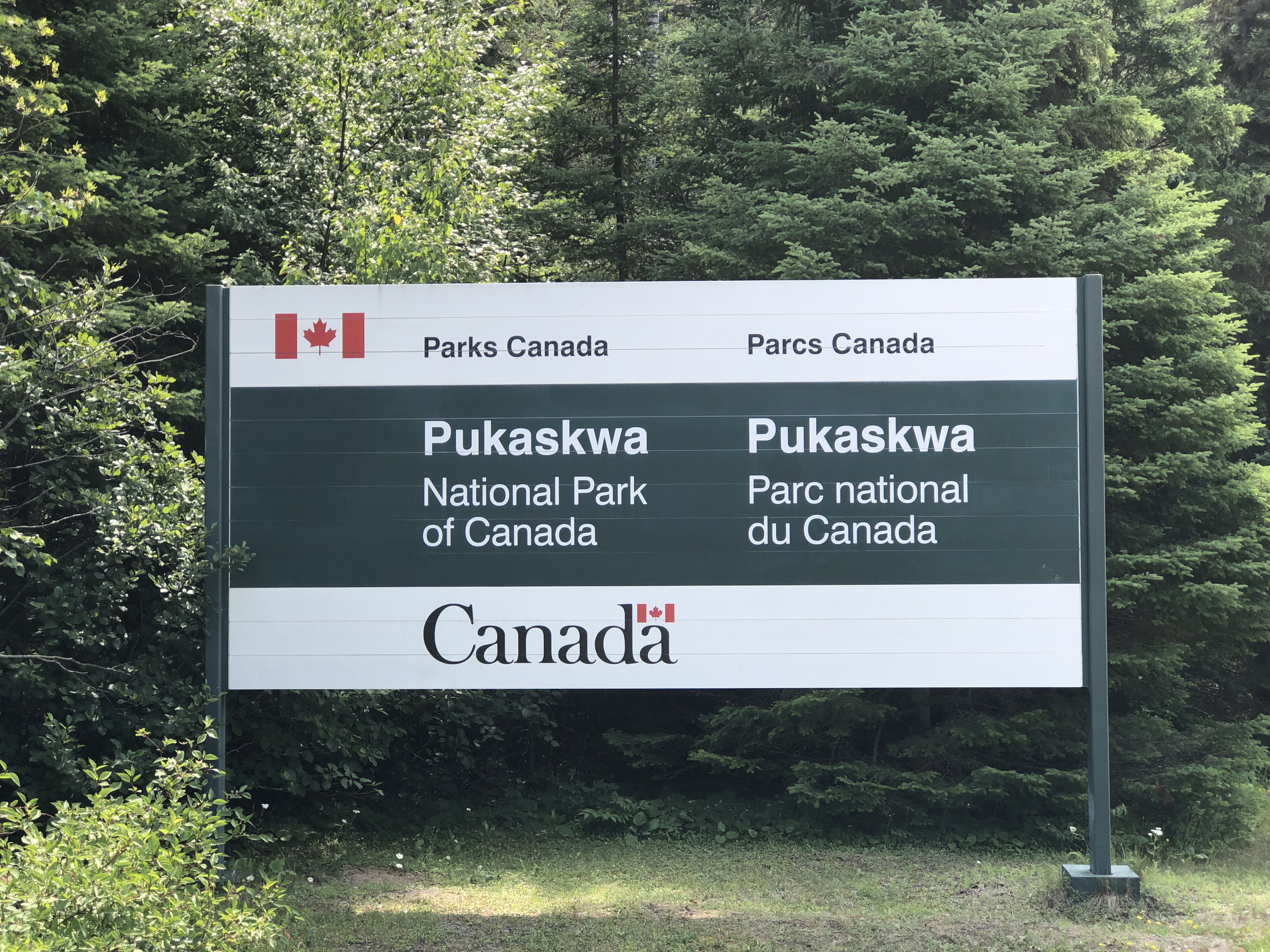
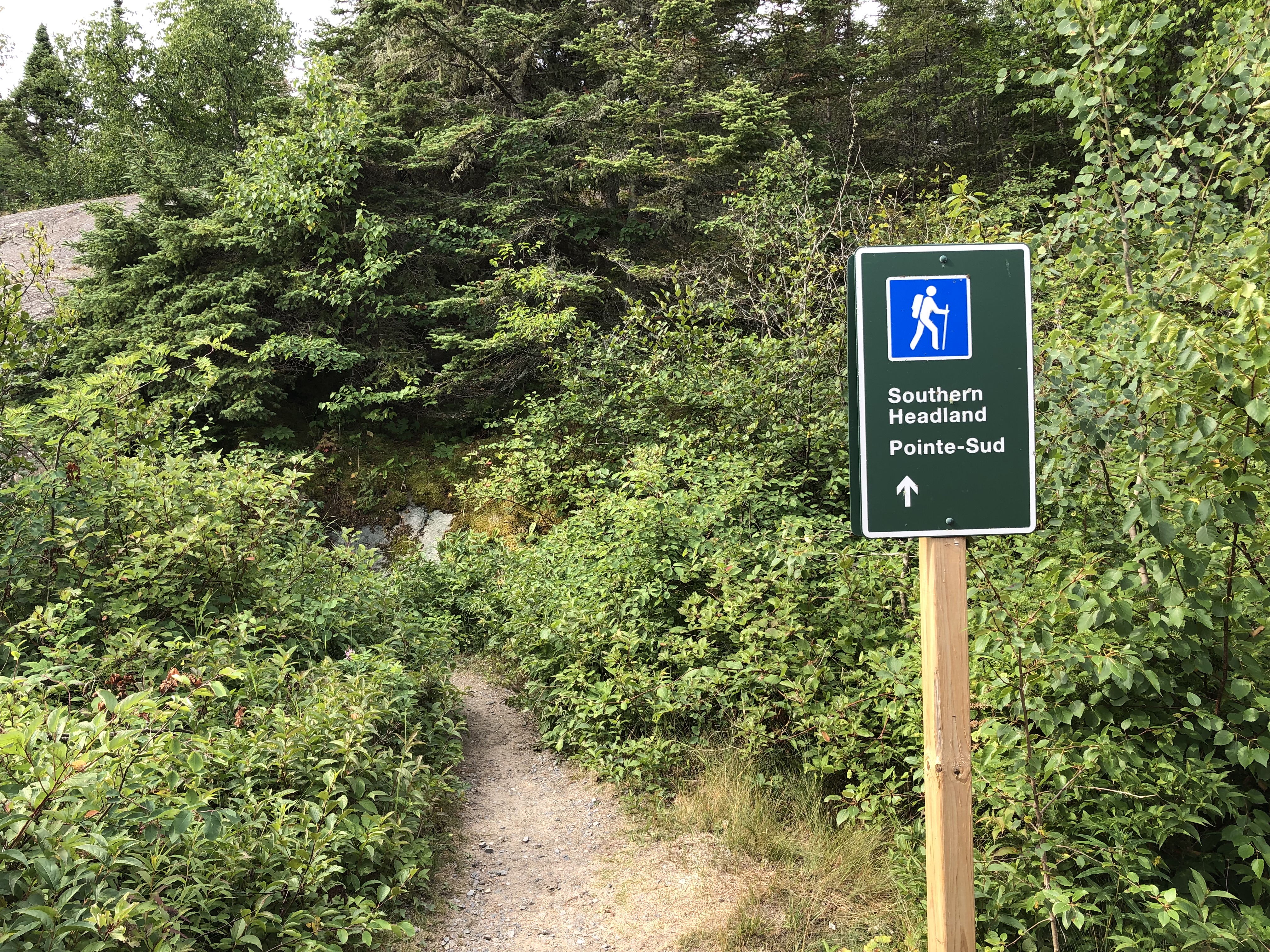
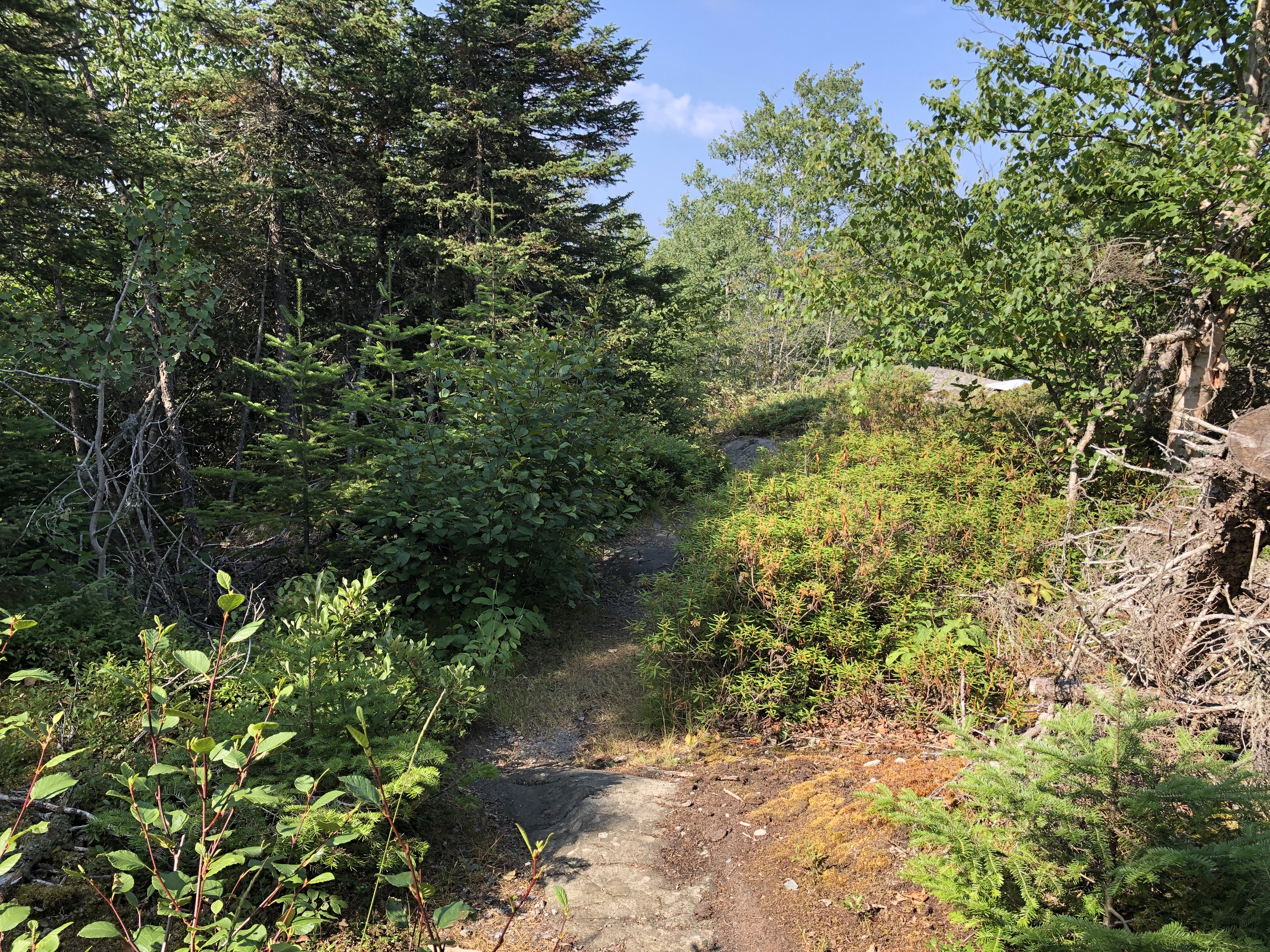



















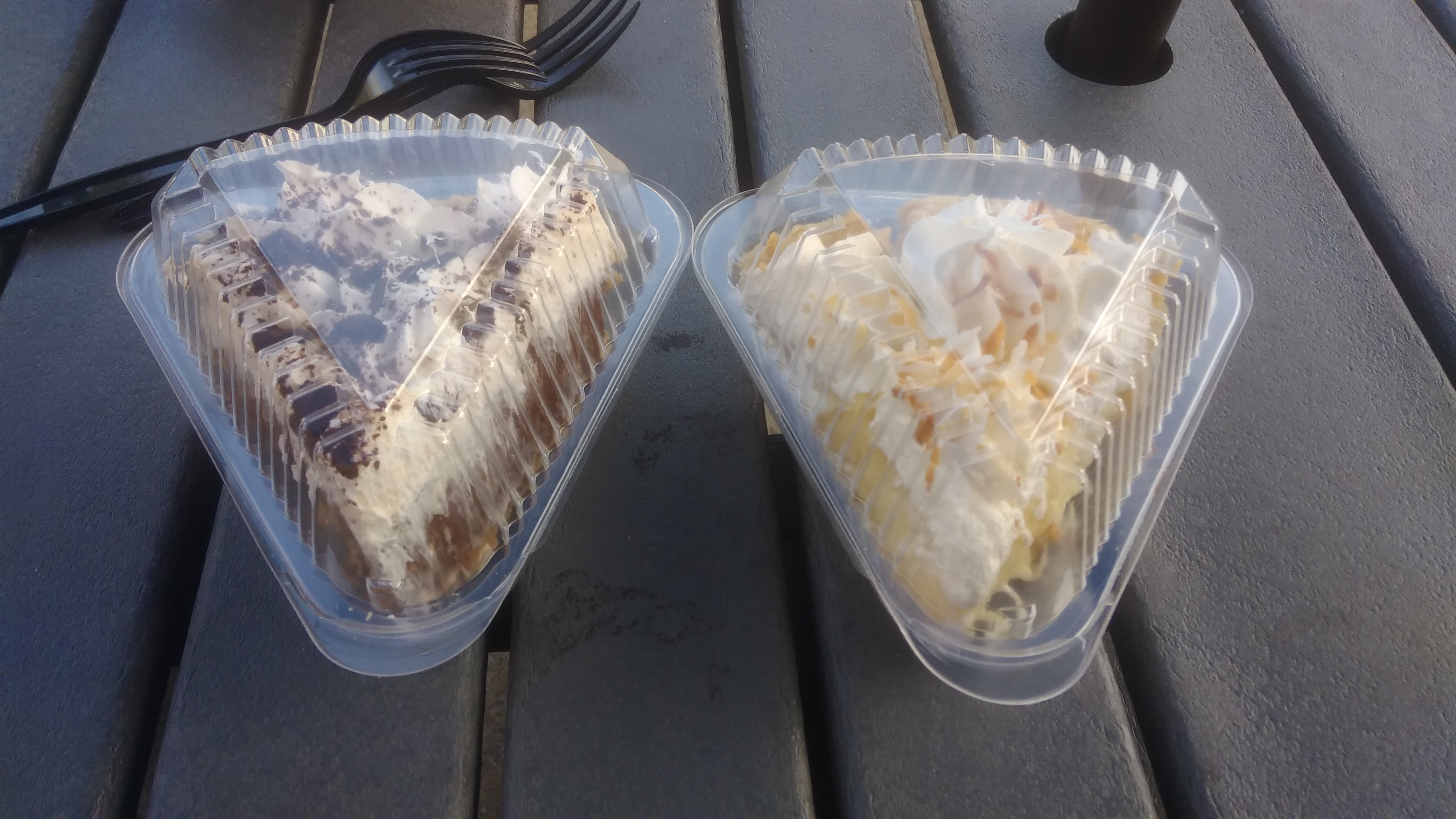
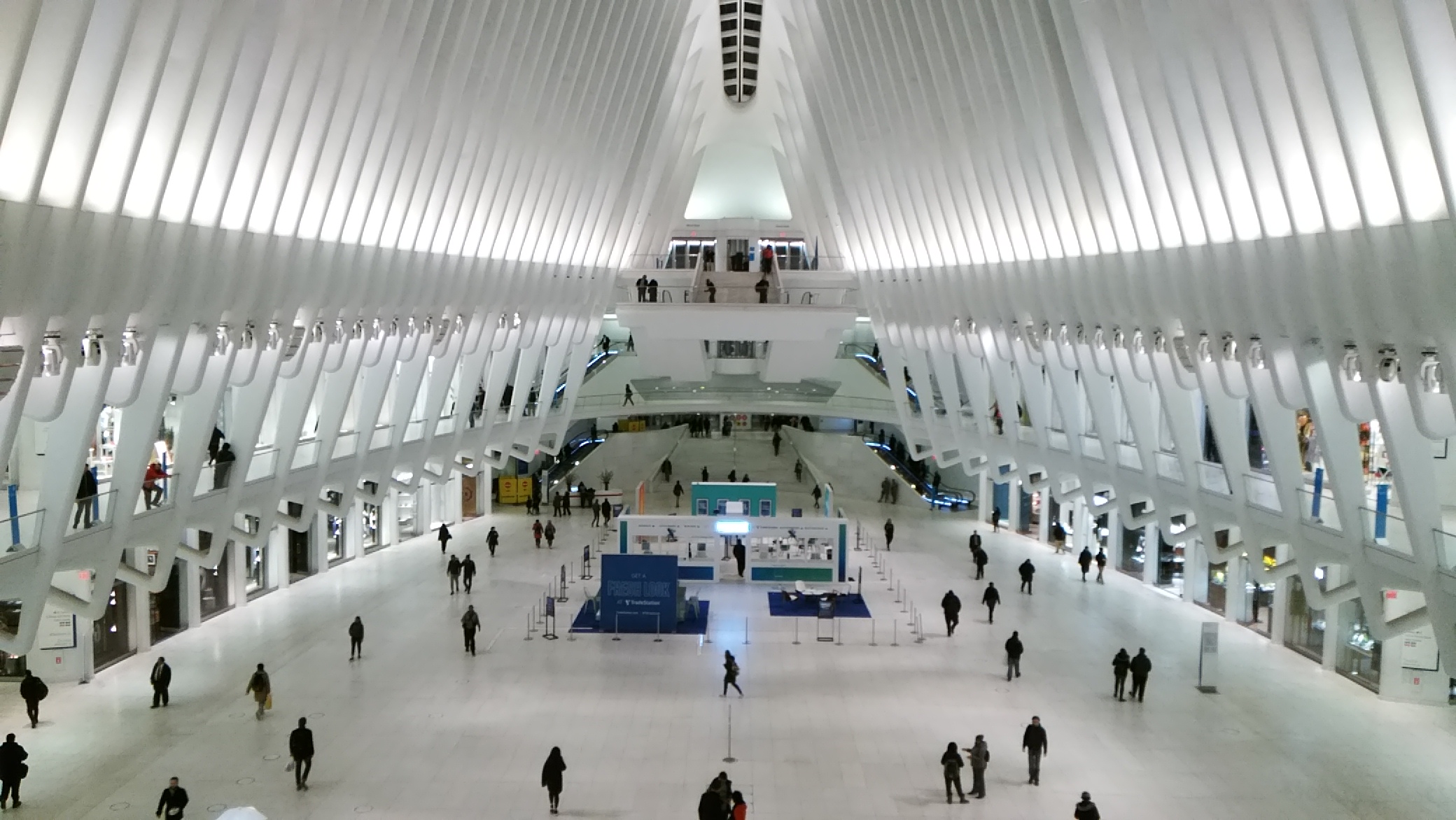
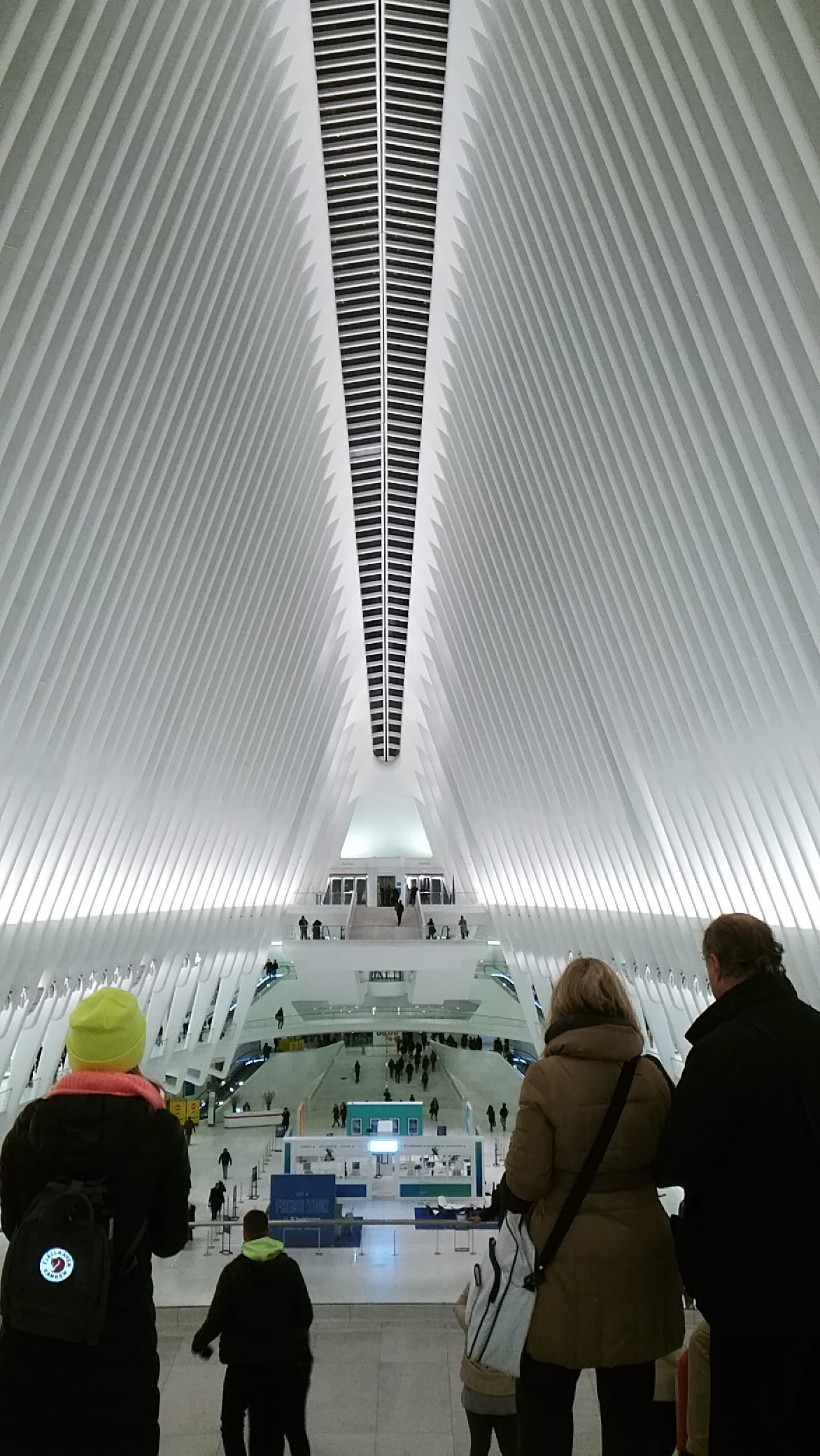 I’d walked to the Oculus from the Downtown restaurant where Geof and his wife Karen and I had had dinner. They wanted to show me the Oculus.
I’d walked to the Oculus from the Downtown restaurant where Geof and his wife Karen and I had had dinner. They wanted to show me the Oculus.